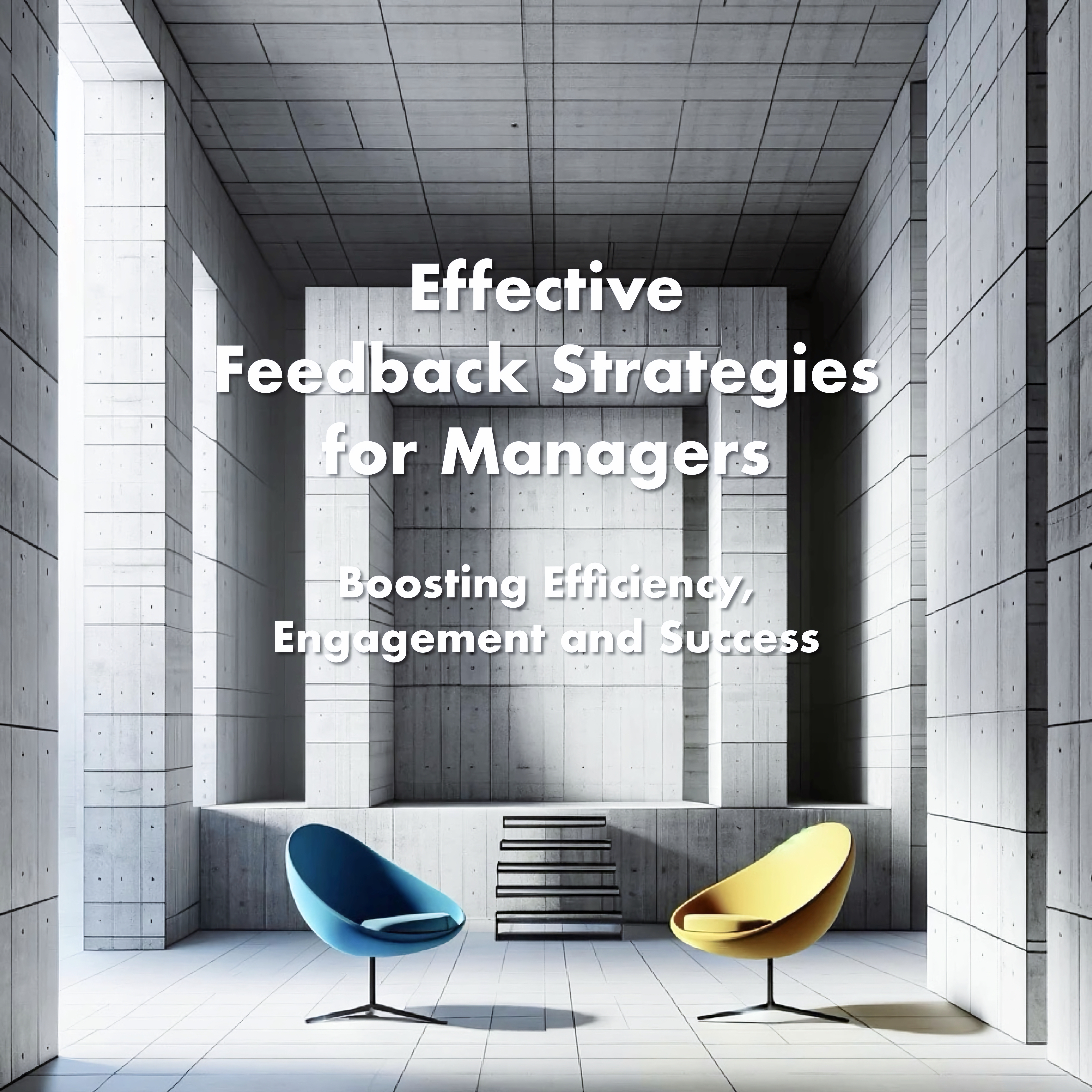A central tool of leadership management is regular feedback, a process in which you as a manager provide your employees with information about their performance, their behaviour and/or the results of their work. The aim is to help employees to categorise, improve or intensify their performance.
In this guide you will learn
- Why feedback is so important,
- What is important here and
- You will learn how to plan and conduct such discussions.
You will also receive a variety of formulation aids for concrete implementation in everyday working life in order to activate a significant increase in performance, motivation and success within your team.
The guide is supplemented by fifty questions and answers to help you deepen your understanding of the key concepts of effective feedback conversations.
Contens
Foreword
1 Feedback and its importance in employee management
1.1 Definition
1.2 Why is feedback important for employees?
1.2.1 Performance improvement
1.2.2 Performance development
1.2.3 Conflict prevention and resolution
1.2.4 Appreciation
1.2.5 Improving communication and collaboration
1.2.6 Development of a culture of learning and improvement
1.2.7 Promoting clarity and security
1.2.8 Increasing motivation and commitment
1.2.9 Long-term success
1.3 Why feedback is rarely used
1.4 The effects of a lack of feedback
1.4.1 Insecurity and lack of self-confidence
1.4.2 Frustration and dissatisfaction
1.4.3 Impairment of performance and productivity
1.4.4 Interpersonal conflicts
1.5 How to overcome fear of feedback
1.6 Questions and answers on the topic of "Feedback"
1.6.1 Isn't feedback superfluous in view of New Work?
1.6.2 What does feedback have to do with psychological safety?
1.6.3. Can feedback have a detrimental effect on the relationship between manager and employee?
1.6.4 Why shouldn't feedback be given on the side?
1.6.5 Does feedback also make sense with a small management span?
1.6.6 Is feedback also necessary for half-time employees?
1.6.7 Is feedback necessary if everything works smoothly?
1.6.8 Aren't management and feedback meetings identical?
1.7 Questions about chapter 1
2 Basics of effective feedback discussions
2.1 The right attitude as a feedback provider
2.2 Delimitations of the feedback
2.2.1 Feedback and criticism
2.2.2 Feedback and criticism
2.2.3 Feedback and praise
2.3 The dialogue approach: Listening and showing understanding
2.4 Techniques for appreciation in feedback
2.5 No-gos in feedback communication
2.6 Supplementary instruments
2.7 Questions about chapter 2
3 Preparation for feedback meetings
3.1 The general announcement of feedback meetings
3.2 Possible concerns of employees about feedback meetings
3.3 Target definition for the individual feedback meetings
3.4 Collect concrete examples in advance
3.5 Create a pleasant atmosphere for dialogue
3.6 Plan timing, frequency and duration
3.6.1 Timing and frequency
3.6.2 Duration
3.7 Questions about chapter 3
4 Practical instructions for feedback discussions
4.1 Basic information
4.1.1 Create a positive atmosphere for dialogue
4.1.2 Define the main objective of the conversation
4.1.3 Encourage dialogue
4.1.4 Work together on solutions and suggestions for improvement
4.2 Sample conversations
4.2.1 Feedback for an employee who is constantly late
4.2.2 Feedback for an employee who treats customers unkindly
4.3 Questions about chapter 4
5 Conclusion of feedback discussions
6 Specialised feedback strategies for individual employee types
6.1 Introverted employees
6.2 Pedantic employees
6.3 Sceptical and critical employees
6.4 Know-it-all employees
6.5 Prestige-orientated employees
6.6 Challenging employees
6.7 Anxious employees
6.8 Demotivated employees
6.9 Aggressive employees
6.10 Destructive employees
6.11 Intriguing employees
6.12 Egotistical, non-team orientated employees
6.13 Newly hired employees
7 This creates a feedback culture
8 Conclusion
Status: 06 / 2024
PDF: 49 Pages
Epub: 75 Pages
General information
The statutory provisions apply with regard to copyright.The thematic framework as well as the facts described in this publication are subject to a continuous development process, so that all information in this guide can only ever correspond to the state of knowledge at the time of publication.
The reader / user remains responsible for the use and implementation of the content provided. As a result, the author accepts no responsibility and no liability, consequential or otherwise, for any damage arising from the use of the information contained in this publication.
We use the assistance of artificial intelligence to increase the structural readability of our texts, to optimise content for users, for the quality management of formal aspects and to generate attractive, context-appropriate images. In addition, AI helps us to analyse reader feedback, adapt to trends and continuously improve our content in order to always offer you the best possible reading experience.

